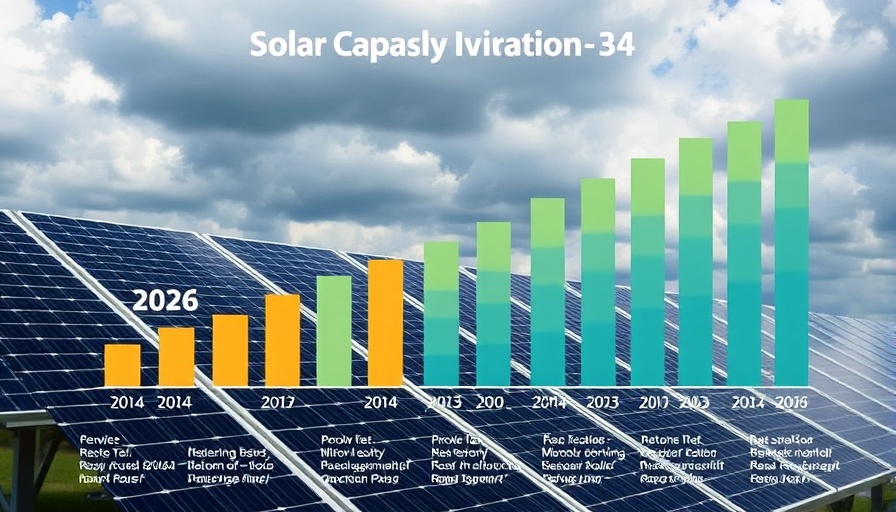
Addressing Overheating Issues in Philly Schools Through Solar Power
As temperatures continue to rise, Philadelphia's schools are feeling the heat—quite literally. Many classrooms are overwhelming, making learning conditions unbearable for students painfully evident. In a significant effort to tackle this issue, experts are turning their eyes toward renewable energy, specifically solar power.
Recent reports have illustrated the stark conditions faced by students in west Philadelphia schools. Akira Drake Rodriguez, a professor from the University of Pennsylvania, highlighted the frustrations of children who must navigate overcrowded and sweltering classrooms, exacerbated by non-functioning water fountains. Such conditions are more than uncomfortable; they can hinder educational outcomes and overall health.
The Path Towards Renewable Energy Solutions
The Philadelphia Energy Authority is currently assessing the viability of solar panel installations across schools in the district, with plans in place to harness renewable energy. This effort is supported by the Solar for Schools Act passed by Pennsylvania lawmakers in July 2024. Designed with a $25 million grant program, the act seeks to fund solar projects in public K-12 schools as well as community colleges and technical schools, thereby alleviating some financial burdens on these struggling institutions.
Maryrose Myrtetus, executive director of the Philadelphia Green Capital Corp, stated that not only can solar installations help improve the physical conditions of schools, but they also promise substantial financial savings. Schools can potentially save thousands annually on energy costs, funds that could then be reallocated to crucial maintenance needs—an essential consideration for institutions in dire repair.
Federal Support and Funding Opportunities
The financial framework for solar energy access in schools has never been more favorable, thanks to provisions from the Inflation Reduction Act. Under this act, schools can receive reimbursements covering up to 30% of their installation costs. When layered with state grants and tax incentives, some Philadelphia schools could offset nearly 90% of their upfront expenses, making solar energy a tantalizing prospect for cash-strapped districts.
Despite this promising landscape, uncertainty lingers due to the current congressional climate. Funding designed to support solar installations faces possible cuts, which could stall the entire initiative just as districts are beginning to explore options.
Building Beyond Just Solar
However, the journey to cleaner, cooler schools goes beyond placing solar panels on rooftops. Schools in Philadelphia grapple with the legacy of aging infrastructure, resulting from decades of underinvestment and inequality. Many of these buildings are over 80 years old, often lacking proper air conditioning, ventilation, and even safe drinking water. The dire need for remodeling poses a real challenge before schools can effectively transition to renewable energy.
Liz Robinson from the Philadelphia Solar Energy Association emphasizes that before moving forward with solar projects, schools must first ensure their buildings are adequately insulated and maintained. Pairing installations with necessary upgrades—for instance, replacing windows or roofs—is vital to maximize energy efficiency.
Confronting Broader Issues of Inequality
In a city where students face high asthma rates linked to poor indoor air quality and old building materials such as asbestos, advocating for solar energy must coincide with addressing the underlying health risks impacting students. Rodriguez points out that many parents do not prioritize solar initiatives amidst pressing safety concerns regarding student safety and health.
“There’s a thousand problems before someone thinks, ‘Oh, we should have more energy-efficient schools,’” she argues, highlighting the multifaceted social issues needing attention. It is imperative to frame energy efficiency and equity discussions alongside the immediate struggles families face, pushing for the recognition that climate resilience starts with infrastructural health.
Conclusion: A Future of Possibilities
Transitioning to solar energy in Philadelphia's schools represents not just an opportunity for cooler classrooms but a significant step towards rectifying the long-standing inequalities in education. As funding initiatives unfold, it is essential for school officials and communities to stay informed and proactive, ensuring they can advocate for the resources needed for sustainable changes.
With ongoing efforts to spread awareness and facilitate access to solar power funding, now is the time for communities to rally behind their schools and push for a cleaner, healthier educational environment. Change is possible, but it requires collective action and commitment from everyone involved.
 Add Row
Add Row  Add
Add 




Write A Comment